The comprehensive fuel consumption is less than 6 liters! GAC Toyota VIA, the hybrid power is fragrance.
[Pacific Auto Network Evaluation Channel] In Toyota’s SUV camp, the compact SUV Willanda (parameter picture) can be called sales, while for multi-member families, there is Highlander, which is also a benchmark model. Weisha (inquiry base price | inquiry and matching) is aiming at the gap between the two, focusing on five boutique labels in the city. It has a certain cross-border SUV style, a more fashionable temperament than Willanda, and a lower cost of materials and configuration. The pricing is also higher, and the top price of dual-engine four-wheel drive has exceeded 300,000. So today, let’s discuss, what is the driving experience and performance of the dual-engine version of VISA?
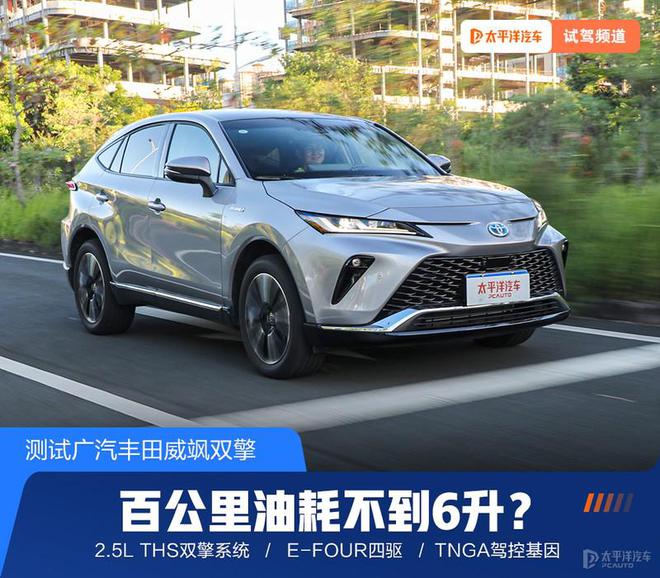
Dynamic feeling
Like other Toyota models, VISA provides gasoline version and hybrid version. We experience the dual-engine hybrid four-wheel drive version. The parameters of the engine and front and rear drive motors are as follows. The total power of the system is 163kW, and the total torque is not officially announced (the total power of the two-wheel drive version is 160kW). The transmission is a hybrid E-CVT, and the drive is also an E-FOUR electronic four-wheel drive system without a transmission shaft. The rear wheels are directly driven by the rear axle motor.
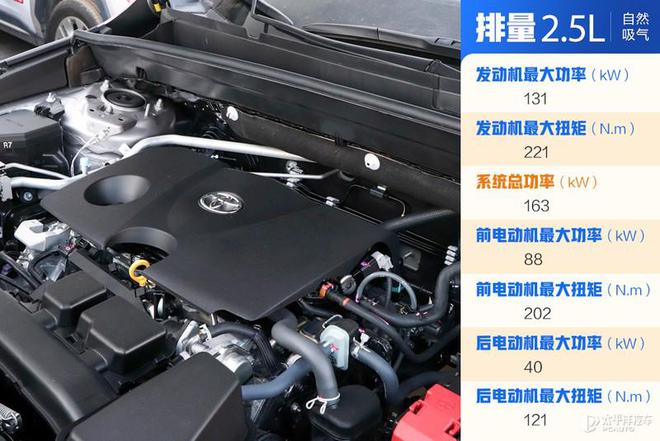
This fourth-generation THS II hybrid system is familiar to everyone, and it is composed of 2.5L Atkinson cycle naturally aspirated fuel engine, E-CVT electronic continuously variable shifting mechanism, battery pack and PCU energy control system. This system has been applied to high-end Toyota models on TNGA-K platforms such as Camry, Willanda and Highlander.
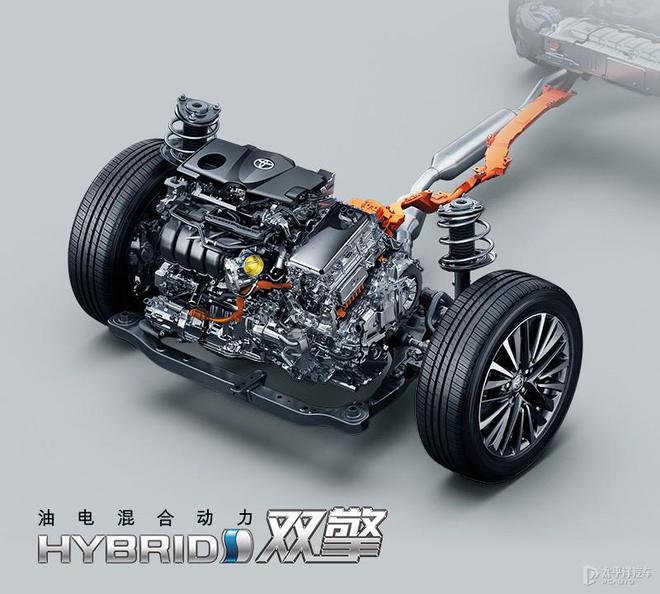

A detailed introduction of the 2.5L dual-engine hybrid system should be at least worded. Fortunately, we have made a detailed interpretation of this system before. If you are interested, you can click on the picture below to jump to the relevant links to learn more about Toyota as a "hybrid master". In this paper, we will focus on the actual driving experience and performance of VISA.

At the beginning, VISA only relies on the motor to drive, which can not only avoid the inefficient working condition of the engine, but also realize the lightness and quietness of the tram with the large torque of the motor. When you step on the accelerator deeply, the engine will start, output power with the motor and replenish energy for the battery.
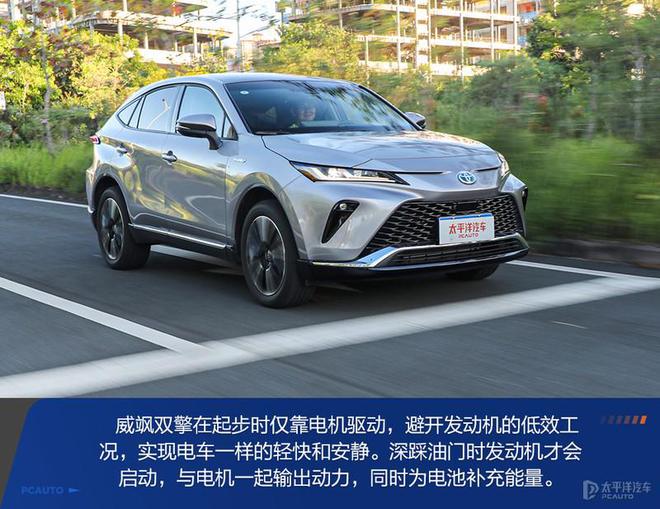
As for the driving modes of ECO, NORMAL and SPORT, the difference between them is simply that the involvement of the engine is different. In the ECO economic mode, the system will use pure electric driving as much as possible, and the engine will not be involved unless necessary, so the power is relatively soft. In SPORT sports mode, the engine will wake up immediately when the throttle is lightly stepped on, and the speed is easier to soar, making driving more enjoyable.
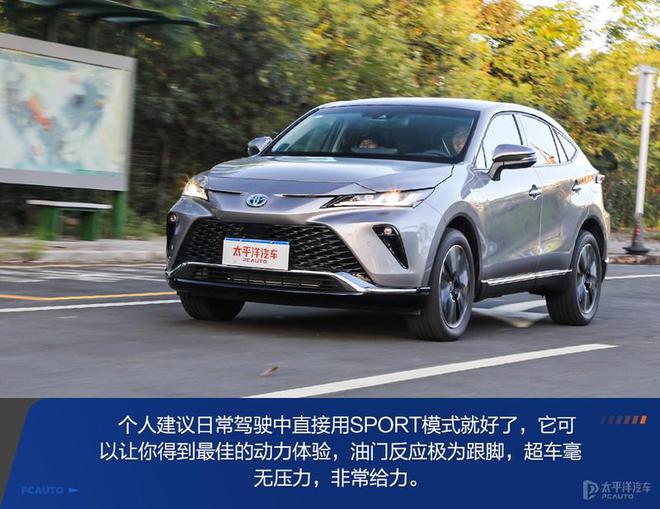
There is also an EV mode button on the car. You can force the system to enter EV mode until the power is low. Of course, if you suddenly get a foot of floor oil, the system will not hesitate to hit the engine to return all the power.
Personally, I suggest using SPORT mode directly in daily driving, and don’t worry that the fuel consumption of sports mode will be much higher. After all, you don’t have floor oil on every foot, right? Sport mode allows you to get faster speed-up ability under the same throttle opening. The dual-engine system is still highly efficient, and the fuel consumption of hybrid vehicles in sport mode will not increase as much as that of fuel vehicles.
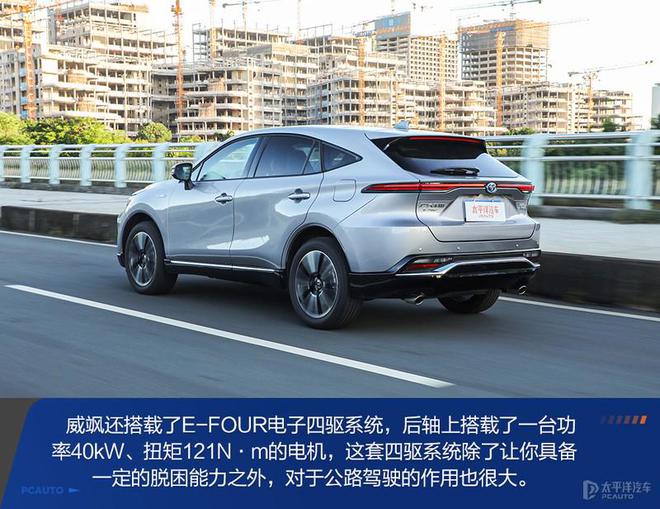
When the vehicle starts, the E-FOUR four-wheel drive system will let the rear wheels output power, which effectively reduces the situation that the front-wheel vehicle starts with heavy tail and light start, and makes the start more rapid and stable. In the case of acceleration, ramp, wet and slippery road, the system can instantly enter the four-wheel drive state, and the torque distribution of the front and rear wheels can be automatically adjusted between 100: 0 and 20: 80. In other words, Toyota’s electronic four-wheel drive system is very helpful for daily driving, not just for you to cope with off-road conditions.
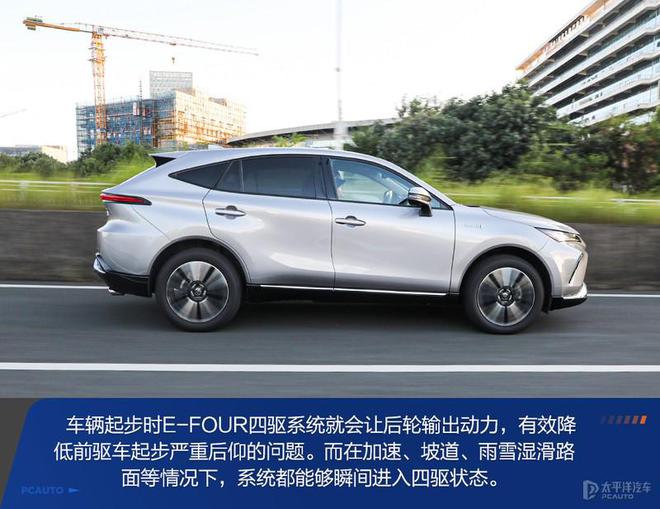
Toyota TNGA has the characteristics of low center of gravity. Although it is an SUV, VISA also has this gene. In addition, it has sensitive steering response, balanced feedback and relatively good suspension support. When driving fiercely, it is very comfortable to control, as if driving a small hatchback steel gun.
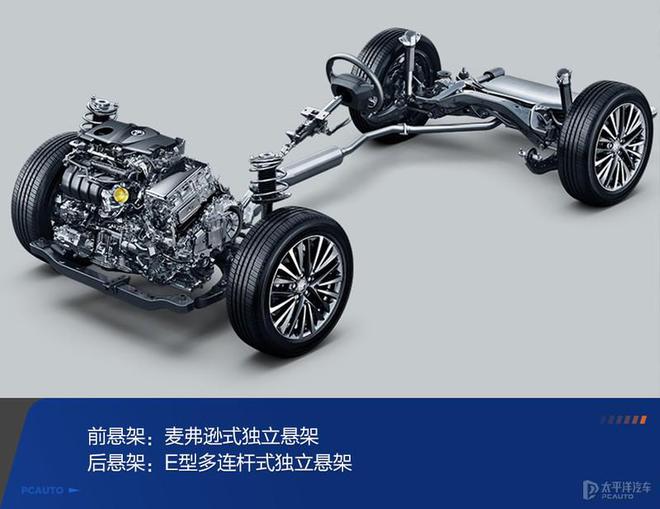
Weisa’s chassis adopts a four-wheel independent suspension structure with E-shaped multi-link before McPherson. This suspension is flexible in the middle and tough in the middle, which can effectively filter out the small bumps on the unpaved pavement. When encountering large pits and ditches, the shock absorber can absorb the impact well, and the rebound is very crisp and comfortable.
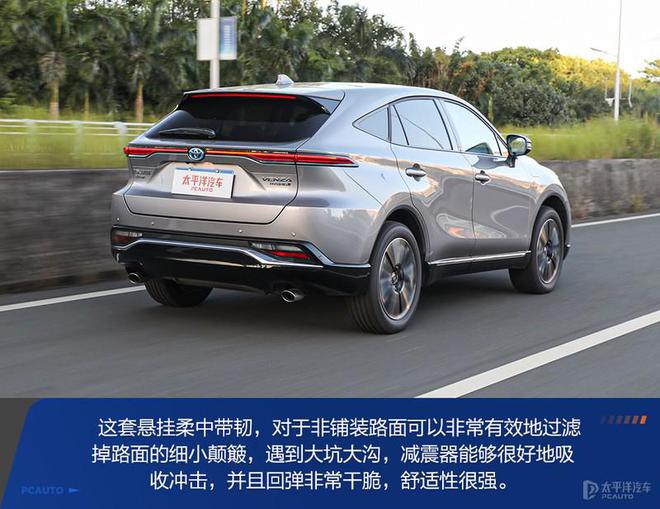
However, as an urban SUV with family orientation, its suspension will naturally not be adjusted to be very tough, so there will still be a certain roll when cornering quickly. Although its handling limit is not low, when full of passengers, it is better to press the speed when cornering.
Regarding other static information such as shape, interior and space, we have made a special analysis before, and the picture below the motor can go to the relevant page, so I won’t repeat it here.

Fuel consumption test
Dual-engine hybrid models, fuel consumption performance is naturally the highlight. The VIA we tested is a four-wheel drive version, so what is its comprehensive fuel consumption performance?
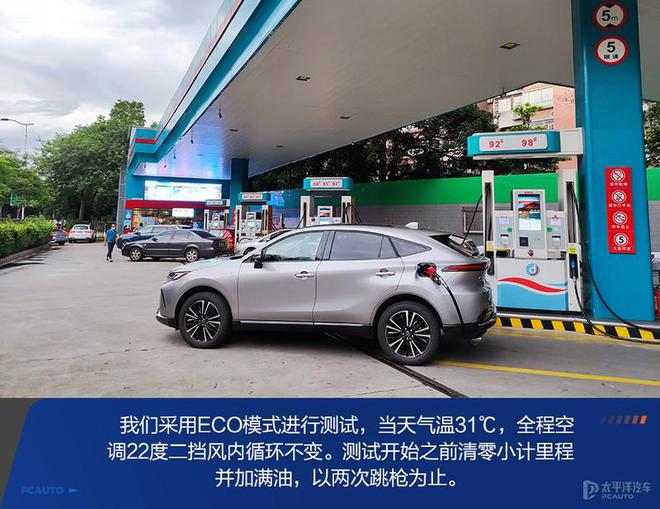
We used ECO mode to test, the temperature was 31℃ that day, and the internal circulation of air conditioner was unchanged at 22 degrees during the whole process. Before the test starts, clear the subtotal mileage and fill it with oil until it jumps twice. The test route traveled a total of 185.1km, with most expressways, and the overall road conditions were relatively smooth. However, due to a serious traffic accident on the expressway, it was congested for a whole hour, and the congestion level has reached the point of long-term stop and low-speed crawling. That is to say, the whole fuel consumption test process is a comprehensive working condition including high-speed cruising, low-speed stop-and-go and long-time parking and idling.
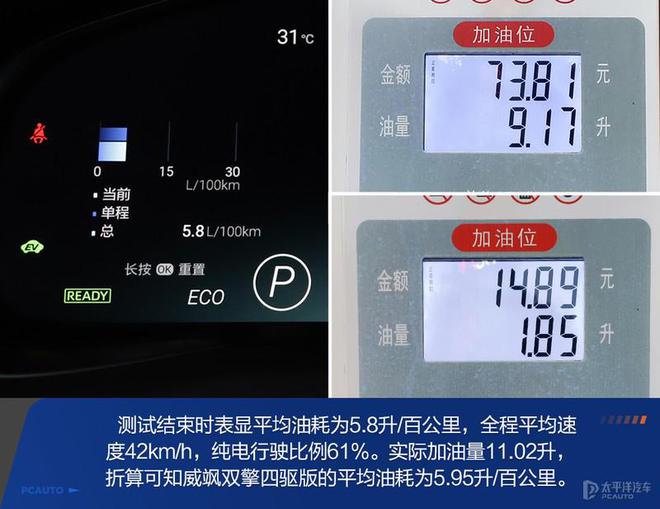
At the end of the test, the fuel consumption is 5.8 liters/100 kilometers, the average speed is 42km/h, and the proportion of pure electric driving is 61%. At the end of the test, we refilled the car with oil, or we jumped the gun twice. The actual fuel consumption is 11.02 liters. After conversion, the average fuel consumption per 100 kilometers of the VISA dual-engine four-wheel drive version is 5.95 liters. This fuel consumption performance is quite good for a four-wheel drive SUV with a large size.
Accelerated test
Before the acceleration test, we need to turn off the ESP and air conditioner, and turn on the sports mode to let the vehicle enter the strongest power state. We start by holding the speed. Because the Toyota twin-engine model doesn’t directly display the speed, we can’t know the maximum speed, but because of the protection procedure, its speed will naturally not be very high. In short, the system is in a state of full output of the engine and motor at the moment of starting.
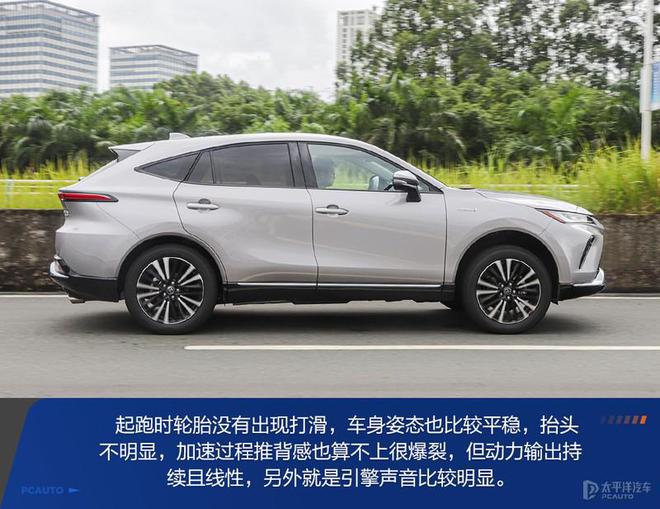
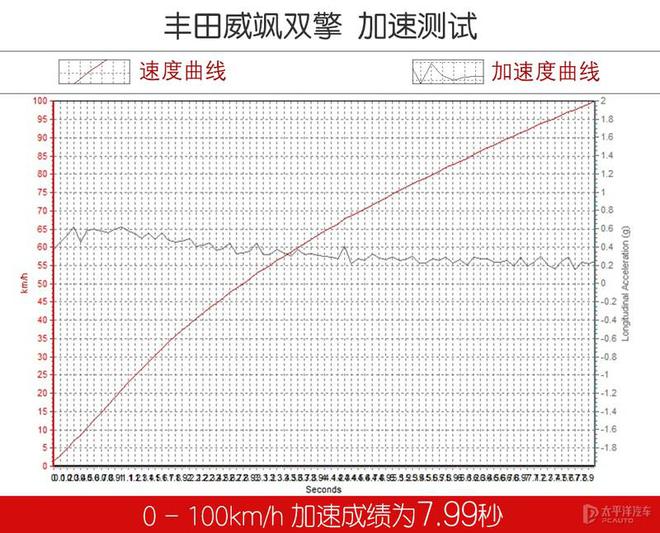
Judging from the acceleration curve, the engine and the motor are working in parallel at the moment of starting, and the acceleration can reach 0.6g, which is still quite powerful, but it soon begins to fall back, and the G value is basically maintained at 0.2g after the speed is 70 km/h.
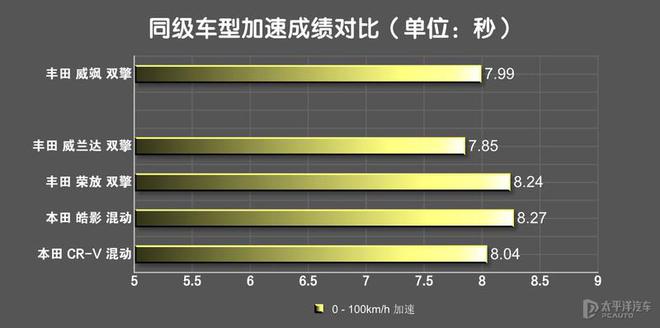
With the positioning of VIA twin engines, there is no particularly equivalent model in the market. We take other Japanese hybrid compact SUVs as a reference. Considering that the test environment is not completely unified and there may be some errors in the test, VIA’s score of 7.99 seconds can be regarded as at the same level as other cars.
Brake test
In the braking test, we stepped on the brake at a speed of 100km/h until it stopped. During the whole test, the braking force was very in place, the output was relatively linear, and the front suspension also provided relatively in-place support. In addition, the foot feel of the brake pedal is relatively uniform, and there will be no obvious phenomena of soft front and tight back, virtual front and solid back. The ABS anti-lock braking system intervened in time, the body posture was relatively stable, and there was no serious lateral swing at the rear.
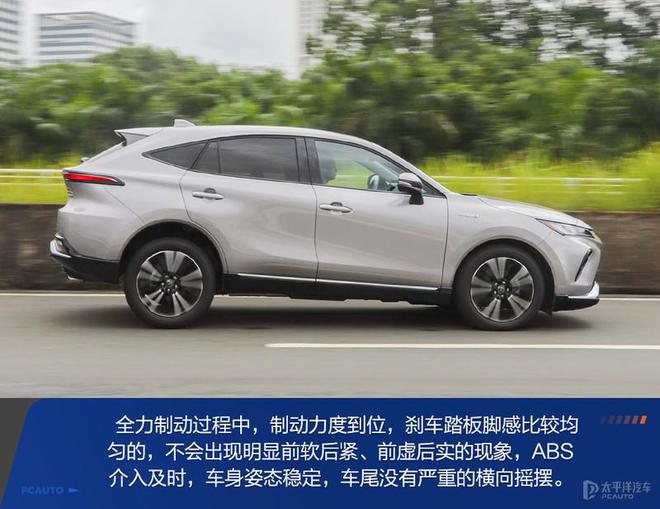
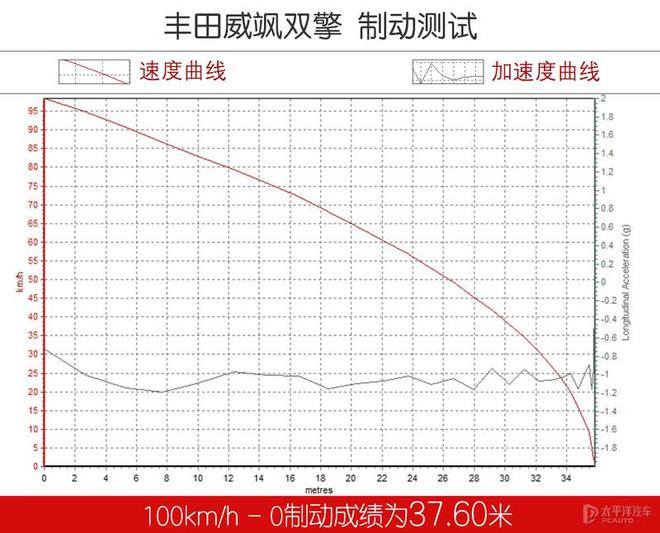
It can be seen from the chart that during the whole braking process, the braking force appears a short rising stage in the initial stage, and then the acceleration basically remains around-1.1g.. Compared with other hybrid compact SUVs, the score of 37.60 meters is also one of the best.
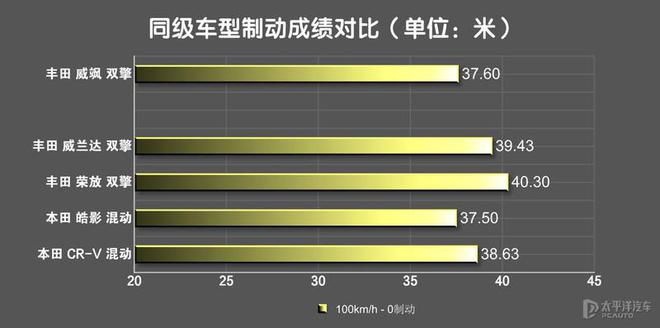
Pile winding test
The test around the pile is a test for the steering accuracy, dynamic response, chassis support and tire grip of the vehicle. According to the actual experience, the ultimate speed around the pile is about 70 km/h. Of course, this limit speed is also affected by the site conditions, tire conditions and drivers. Generally speaking, as an SUV, the handling performance of VISA is quite good.
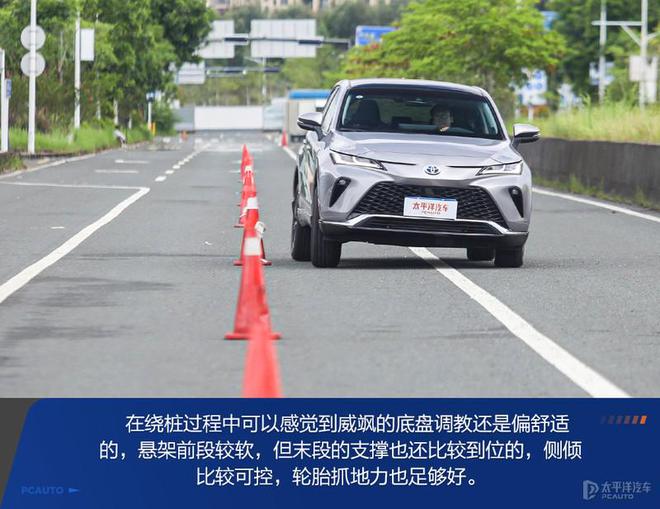
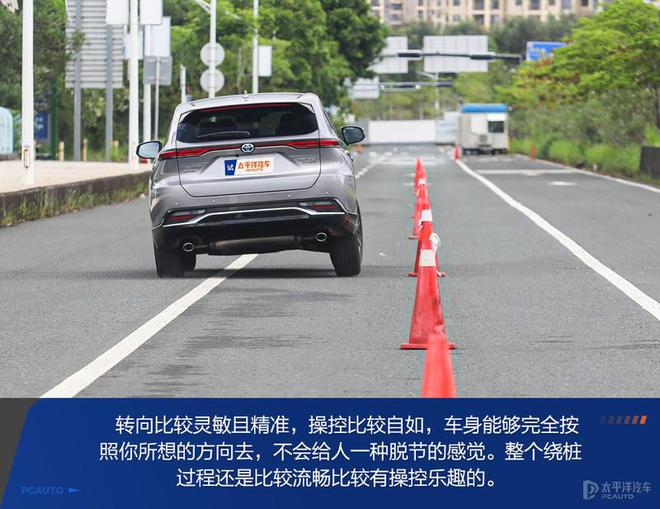
In addition, the steering around the pile is relatively hand-to-hand, which makes it easier to control, and the body can go in the direction you want completely, without giving people a sense of disconnection. Thanks to the motor assistance with better explosive torque, it is easier to keep the speed around the pile, and the speed can be raised as soon as the oil is fed, so the whole process is relatively smooth and interesting to control.
Noise test
We tested that the Extreme Edition of VISA Dual-engine Four-wheel Drive is equipped with a front sound insulation glass. After turning off any functions that may make noise, such as air conditioning, stereo and seat ventilation, we measured that the minimum stable value of the noise inside the car was 33.9 dB when the engine was turned off. At this time, the ambient noise outside the car is 48.6 decibels, which effectively isolates the noise outside the car. When the engine starts running, its noise is more obvious, reaching 47.7 decibels, which is close to the ambient noise outside the car.
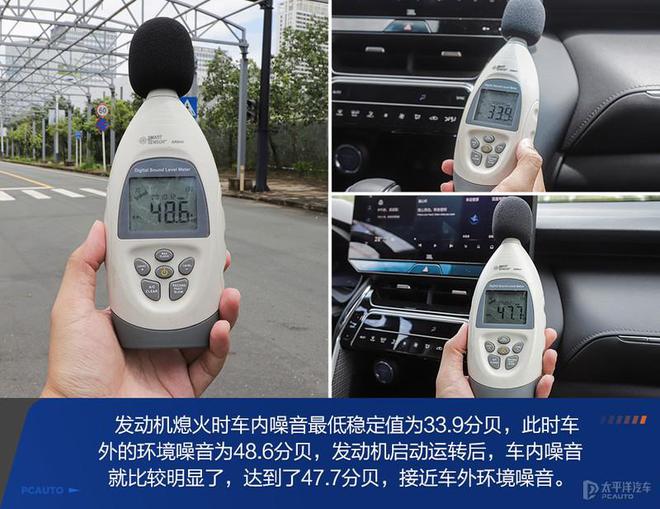
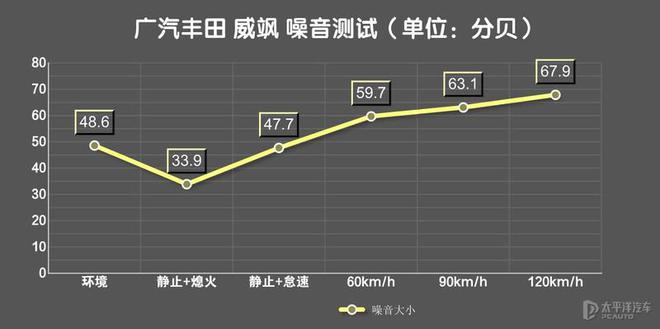
As the speed increases, the noise inside the car naturally increases. At the three speeds of 60km/h, 90km/h and 120km/h, the interior noise values are 59.7 dB, 63.1 dB and 67.9 dB respectively. The noise test is also affected by the site environment, wind speed and the error of the noise meter itself, but the sound insulation level of VISA is good compared with the previous models tested by the same noise meter in the same site.
Total knot
Generally speaking, there is not much difference in the performance of VISA because it is equipped with the same dual-engine power system as Willanda. However, as a model with higher positioning, VIA has indeed created a higher texture in terms of design style and interior materials, and has a more sporty adjustment in terms of handling. If you are a consumer who pursues high quality and there is no demand for seven seats at the same time, then with a budget of 300,000, VISA is just right for you! (Photo/Text/Photo: Pacific Ocean)
Comparison of vehicle parameter configuration
● Standard ○ Optional-No model picture: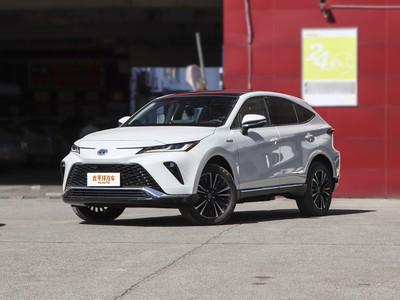
Vehicle information:Weisa
Section 2022
Dual-engine 2.5L E-CVT Four-wheel Drive Extreme EditionOfficial price: 303,800 yuan purchase tax: 26,900 yuan final landing price (including insurance money): 342,700 yuan energy consumption (20,000 kilometers/year):-Manufacturer: GAC Toyota Grade: medium SUV time to market: 2022-01 Engine: 2.5L L4 air intake form: naturally aspirated maximum horsepower (PS): 178 maximum torque (N m : 128 total torque of motor (n m): 323 battery charging time: 323 fast charging amount (%):-gearbox: E-CVT continuously variable body type: 5-door 5-seat SUV length× width× height (mm): 4780× 1855× 1660 wheelbase (mm): 2690 maximum speed (km) -Measured braking at 100-0km/h (m):-Measured fuel consumption (L/100km):-Measured pure electric cruising range (km):-Measured fast charging time (hours):-Measured slow charging time (hours):-Measured power consumption per 100 km (kWh/100 km):-Measured vehicle speed of 0km/h.: 5WLTC comprehensive fuel consumption (L/100 km):-CLTC comprehensive fuel consumption (L/100 km):-Battery warranty time: unlimited years/unlimited mileage for the first owner (the exemption clause is subject to the official): NEDC pure electric cruising range (km):-WLTP pure electric cruising range (km):-CLTC pure electric cruising range (km):- :-Charging time:-Vehicle warranty: three years or 100,000 kilometers. First owner warranty policy:-Driver assistance level: L2 Body type: SUV length (mm): 4780 width (mm): 1855 height (mm): 1660 wheelbase (mm): 2690 front track (mm): 1607 rear track (mm) : 5 seats (units): 5 fuel tank volume (L): 55 luggage compartment volume (L):-Maximum luggage compartment volume (L):-Internal luggage compartment size (mm):-Cargo compartment size (mm):-Maximum load mass (kg):-Engine model: A25D displacement (mL): 2487 intake mode. : 5700 Maximum torque (n m): 221 Maximum torque and speed (rpm): 3600-5200 Cylinder arrangement: number of in-line cylinders (units): 4 number of valves per cylinder (units): 4 Compression ratio: 14 Valve train: DOHC cylinder diameter (mm): 87.5 stroke (mm): 103.4 Engine specific technology: VVT-iE/VVT-i fuel form: gasoline-electric mixed fuel label: No.92 (formerly No.93) fuel supply mode: mixed injection cylinder head material: aluminum alloy cylinder block material: aluminum alloy emission standard: national VI motor model:- : 174 total motor power (kW): 128 total motor torque (n m): 323 maximum motor power (kw): 88 maximum motor torque (n m): 202 maximum motor power (kw): 40 maximum motor torque (n m): 121 drive mode: non-plug-in hybrid drive motor. : 163 system comprehensive torque (n m):-NEDC pure electric cruising range (km):-WLTP pure electric cruising range (km):-CLTC pure electric cruising range (km):-EPA pure electric cruising range (km):-Official power consumption per 100 kilometers (kWh/100 km):-Battery capacity (kWh):-. -battery type: ternary lithium battery warranty time: the first owner has unlimited years/unlimited mileage (the exemption clause is official) battery charging time: the first owner has unlimited years/unlimited mileage (the exemption clause is official) fast charging amount (%)-abbreviation: E-CVT continuously variable gear number:-gearbox type: electronic continuously variable gearbox (E-CVT) Driving mode: front four-wheel drive four-wheel drive form: electric four-wheel drive central differential structure:-front suspension type: McPherson independent suspension rear suspension type: E-type multi-link independent suspension steering assist type: electric moped body structure: load-bearing front brake type: ventilated disc rear brake type: disc parking brake type: electronic parking front tyre size: 225/55 R19 rear tyre size: 225/ 55 R19 spare tire specification: non-full-size spare tire size:-approach angle ():-Departure angle ():-Longitudinal passing angle ():-Maximum climbing degree (%)/climbing angle ():-Minimum ground clearance (mm):-Minimum turning radius (m): 5.7 Maximum wading depth (mm). : ● Traction control (ASR/TCS/TRC, etc.): ● Body stability control (ESP/DSC/ESC, etc.): ● Tire pressure monitoring device: tire pressure display explosion-proof tire:-Safety belt unbuttoned prompt: front row merging assistance: ● Lane departure warning system: ● Lane keeping assistance system: ● Active braking/active safety system: ● Road traffic sign recognition:-Fatigue driving prompt.: Front ●/Rear ● Front knee airbag: main ●/deputy-passenger seat cushion airbag:-Front center airbag:-Rear seat anti-sliding airbag:-Pedestrian collision protection system: -ISO FIX child seat interface: ● Engine electronic anti-theft: ● Central locking in the car: ● Key type: remote key driving automatic locking: ● Remote lifting window: ● Remote start:- Rear radar: front ●/rear ● Parking image system: 360-degree panoramic image: car side blind spot image system:-Dynamic reversing reminder system: ● Driving mode switching: standard/comfortable.
economy
Automatic parking in motion:-Engine start-stop technology:-Automatic driving assistance:-Uphill assistance: ● Automatic parking: ● Steep descent:-Variable suspension:-Electromagnetic induction suspension:-Air suspension:-Variable steering ratio:-Integral active steering system:-Front axle limited slip differential/differential lock:-Central differential locking function:-Rear axle limited slip differential/differential lock:. :-Sports appearance kit:-Aluminum alloy wheel hub: ● Electric spoiler:-Electric suction door:-Frameless design door:-Electric trunk: ● Induction opening of trunk: ● Position memory of electric trunk: ● Roof rack:-Hidden electric door handle:-Active air intake grille:-Steering wheel material: leather steering wheel adjustment range: up and down+front and rear steering wheel electric adjustment:-Multifunctional steering wheel: ●
Multimedia information full LCD instrument panel: ● LCD instrument panel size: 12.3 inch HUD head-up digital display: ● Car driving recorder:-Mobile phone wireless charging: front seat material: imitation leather+leather sports style seat:-Front seat height adjustment: front seat cushion inclination adjustment: front seat lumbar support adjustment: front seat shoulder support adjustment:-main/co-pilot seat electric adjustment: main ●/ Deputy ● Rear seat of the passenger seat is electrically adjustable:-Rear seat adjustment: backrest adjustment Rear seat electric adjustment:-Electric seat memory: steering wheel of the driver’s seat/comfortable entry and exit of the seat:-Front/rear seat heating: front ●/rear-front/rear seat ventilation: front ●/rear-front/rear seat massage: front-/rear-rear seat reclining form: the third row of seats is reclined proportionally. Rear ● Rear cup holder: ● Air conditioning adjustment mode: automatic temperature zoning control: dual-zone rear independent air conditioning:-rear seat air outlet: ● PM2.5 filter in the car: ● car air purifier: ● Negative ion generator: ● car refrigerator:-low beam light source: LED high beam light source: LED adaptive distance light: ● daytime running light: ● automatic headlights: ● steering auxiliary light:-follow-up steering headlights.:-Front fog lamp: rain and fog mode of headlights:-Headlight height can be adjusted: ● Headlight cleaning device:-Headlight is turned off in a delayed manner:-Touch reading lamp:-Interior ambient light: ○ Electric window: one-button up/down of the whole car window: anti-pinch function of the whole car window: multi-layer sound insulation glass of the whole car: ultraviolet protection of the front window/ Thermal insulation glass:-Electric adjustment of rearview mirror: ● Heating of exterior rearview mirror: ● Electric folding of rearview mirror: ● Automatic folding of rearview mirror when locking the car: ● Automatic turning-down of rearview mirror when reversing: ● Memory of rearview mirror: ● Automatic anti-glare of interior/exterior rearview mirror: streaming function of interior/exterior-interior rearview mirror: ● Rear windshield sunshade:-Rear side sunshade:-Rear side privacy glass: ● Sunvisor makeup mirror: main driver.
Co-pilot+rear wiper of floodlight: ● Induction wiper: ○ color large screen of center console: ● Large screen size of center console: 12.3 inches. Operation mode of center console: touch-sensitive satellite navigation system: ● Real-time traffic information display: ● Mobile phone interconnection/mapping:-car networking: ●OTA remote online upgrade: road rescue call: ● Voice recognition control system: multimedia system.
navigate
telephone
air conditioner
Skylight gesture control:-Bluetooth/car phone: ● Central control LCD screen display:-Car TV:-Rear LCD screen:-Rear central control system:-Interface type: USB
AUX
Number of Type-CUSB/Type-C interfaces: standard: 3, Optional: 2220V/230V power supply:-12V power supply interface of trunk: -CD/ DVD:-Speaker brand: JBL speaker quantity: standard: 9 active noise reduction system:-System name: Toyota Safety Sense autopilot chip:-Chip computing power:-Number of cameras:-Millimeter wave radar:-Ultrasonic radar:-Lidar:-Automatic lane change:-Corner keeping assistance:-Navigation assistance driving:-Built-in high-precision map:-Obstacle visual display:- Drive-out:-Remote call:-Car system:-Face recognition: ● Fingerprint recognition:-Processor:-Number of central control screens:-Screen resolution:-Screen rotation:-Multi-screen interaction:-Voice recognition:-Multi-round voice dialogue:-Fuzzy semantic recognition:-Remarks:-Fast track: understanding dealer quotation > >
Enter the car channel > > More car comparison > >